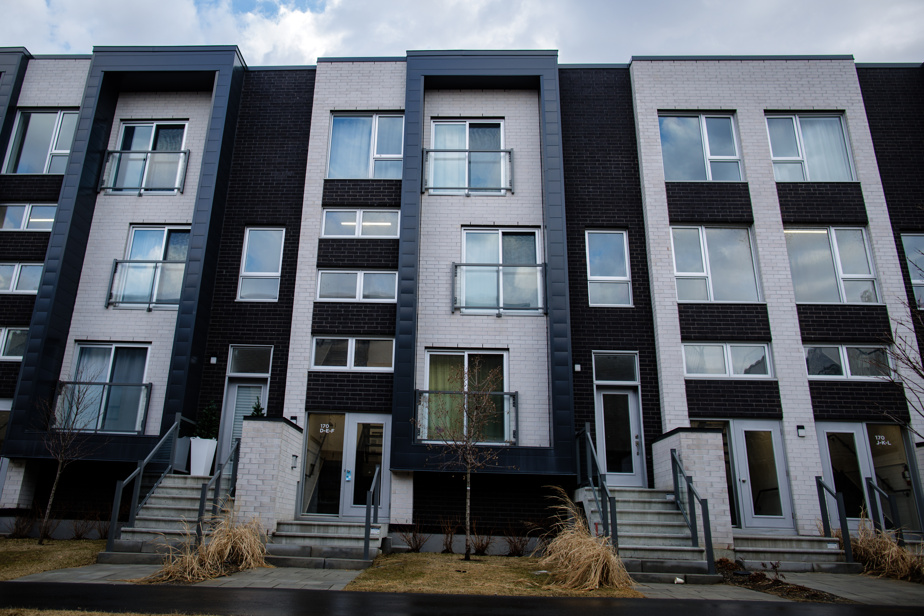The federal budget announced Tuesday put on alert the many owners of small income buildings – plexes – or second homes who are banking on their eventual resale at a good profit.
By modifying the tax standards for capital gains, that is to say the profit made on the resale of an asset, the federal government plans to collect $19 billion in additional tax revenue from five years here.
However, almost half of this tax pot, or 8.8 billion according to the federal budget, will come from the pockets of individuals during the resale of assets such as an income property or a second home (most of the time a chalet).
Essentially, the Trudeau government has decided to increase from 50% to 66.67% the portion of capital gains that is taxable for everything that exceeds a new ceiling of $250,000 per year. This new tax threshold will apply from June 25.
According to the Federal Ministry of Finance, this increase in capital gains tax will only affect a very limited number of taxpayers who are already among the wealthiest.
But in reality, it is all individuals who own an asset whose resale will generate a capital gain of more than $250,000, such as an income property or a well-valued chalet, who could have to pay thousands of dollars in additional tax after this resale.
To see more clearly, The Press had three standard cases prepared with the professional assistance of Stéphane Leblanc, accountant and tax specialist from the consulting firm EY, in Montreal. (See the menus on the right.)
Typical case 1: Owner occupying a triplex
According to current tax standards, a capital gain of $400,000 on the resale of a triplex by its owner-occupier would generate a tax of $71,067 for the tax year of the resale.
This result takes into account the principal residence exemption for one third (33%) of this capital gain, as well as the taxation of 50% of the other part (two thirds) of this capital gain at most. high marginal tax rate applicable during this fiscal year of the resale of the triplex (53% in 2024).
After the coming into force (on June 25) of the changes to the tax standards, the tax bill of an owner-occupier who resells his triplex with the same amount of $400,000 in capital gains will increase to $72,547, or $1480 more.
Typical case 2: Non-occupying owner of a triplex
According to current tax standards, a capital gain of $400,000 on the resale of a triplex by its non-occupying owner would generate a tax of $106,600 for the tax year of the resale.
This result takes into account the absence of a principal residence tax exemption for this capital gain, 50% of which is then subject to the highest marginal tax rate applicable during this tax year of the resale of the triplex (53% in 2024).
After the changes to the tax standards come into effect, the tax bill of a non-occupying owner who resells his triplex with the same amount of $400,000 in capital gains will increase to $119,925, or $13,325 of more.
Typical case 3: Owner of a luxurious second home
According to current tax standards, a capital gain of $500,000 on the resale of a high-value second home would generate a tax of $133,250 for its owner-seller during the tax year of the resale.
This result takes into account the absence of a principal residence tax exemption for this capital gain, 50% of which is then subject to the highest marginal tax rate applicable during this tax year of the resale of the chalet (53% in 2024).
After the changes to the tax standards come into effect, the tax bill of an owner who resells their second home with the same amount of $500,000 in capital gains will increase to $155,458, or $22,208 more .
SME owners also concerned
In the opinion of the Canadian Federation of Independent Business (CFIB), which represents thousands of small business owners, the capital gains tax changes announced in the recent federal budget “will create winners, but also many losers among Canadian entrepreneurs.”
What winning elements? “The government announced an increase in the capital gains exemption limit from $1 million to $1.25 million. This is good news for entrepreneurs,” says Jasmin Guénette, vice-president of national affairs at the CFIB.
“The federal budget also proposes to establish a new incentive for entrepreneurs in certain sectors of activity. This incentive will reduce the tax threshold on the next $2 million (in capital gains) when fully in effect. »
In return, which losing elements? According to Jasmin Guénette, “increasing the tax threshold to 66.67% (of capital gains) will result in many losers among owners of smaller SMEs, such as professional services, financial services and insurance, as well as SMEs in accommodation and catering.”
According to the vice-president of the CFIB, these small entrepreneurs “will have to pay more taxes on the sale of their SME, in whole or in part, when the amounts exceed $2.25 million.”
Martin Vallières, The Press
